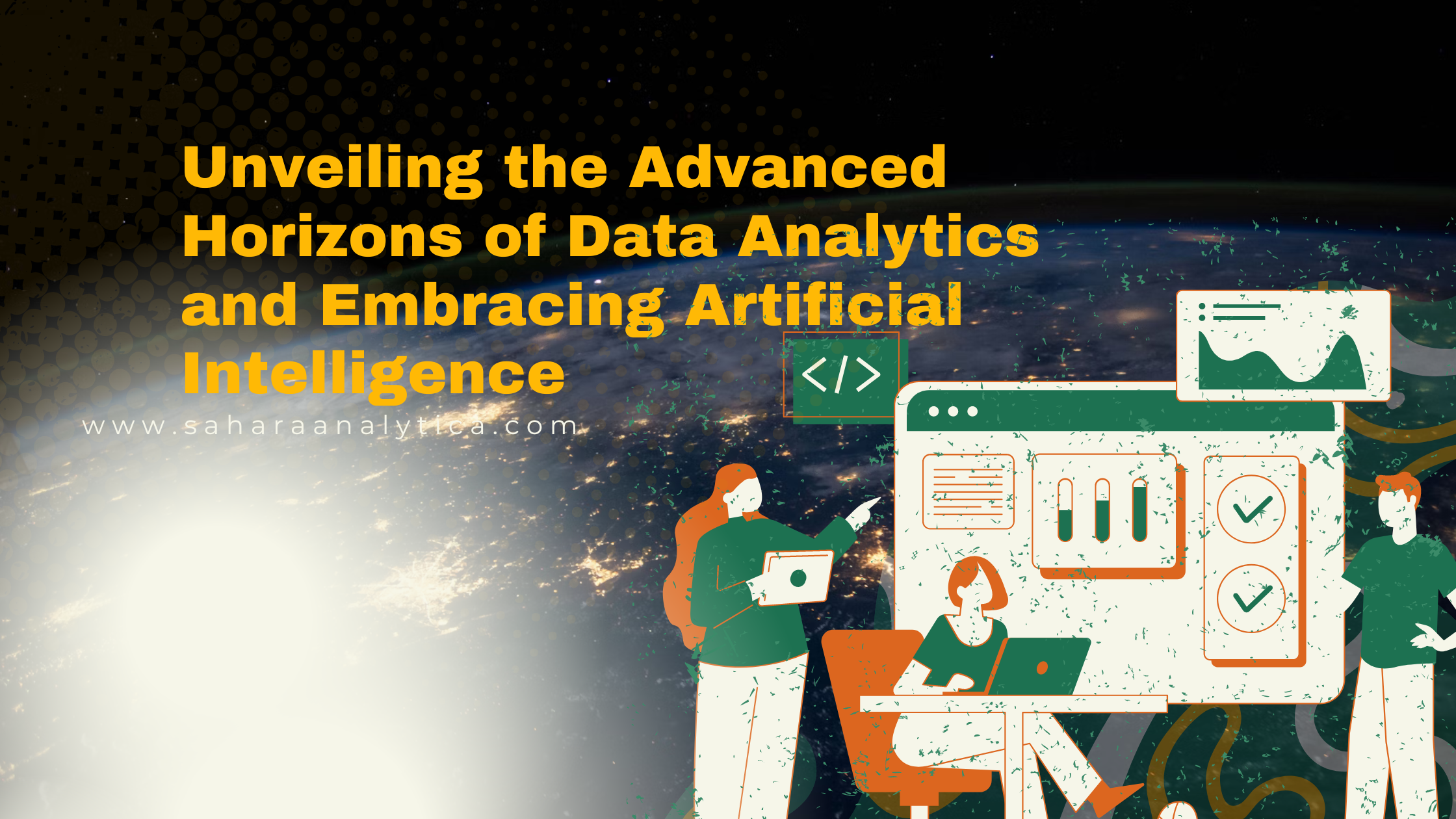In the dynamic landscape of data analytics, the integration of advanced methods, particularly artificial intelligence (AI), has revolutionized the way organizations extract insights, make predictions, and optimize processes. As businesses seek to leverage data as a strategic asset, the intersection of AI and data analytics holds immense potential for driving innovation, uncovering hidden patterns, and gaining a competitive edge. In this blog post, we’ll delve into the advanced methods of data analytics, with a focus on artificial intelligence, and explore how organizations can harness these technologies to unlock new opportunities and drive transformative outcomes.
1. Machine Learning: At the forefront of advanced data analytics techniques lies machine learning, a subset of AI that enables systems to learn from data and improve their performance over time without explicit programming. Machine learning algorithms can analyze large volumes of data, identify patterns, and make predictions or decisions based on those patterns. Whether it’s classification, regression, clustering, or reinforcement learning, machine learning algorithms empower organizations to extract actionable insights and automate decision-making processes across various domains, including finance, healthcare, marketing, and cybersecurity.
2. Deep Learning: Deep learning represents a sophisticated branch of machine learning that utilizes artificial neural networks with multiple layers to model complex patterns and relationships in data. By leveraging deep learning techniques such as convolutional neural networks (CNNs), recurrent neural networks (RNNs), and generative adversarial networks (GANs), organizations can tackle challenging tasks such as image recognition, natural language processing, and speech recognition with unprecedented accuracy and efficiency. Deep learning algorithms excel at handling unstructured data and can uncover intricate insights from diverse sources, enabling organizations to unlock new levels of understanding and innovation.
3. Natural Language Processing (NLP): Natural language processing (NLP) is a specialized field of AI that focuses on enabling computers to understand, interpret, and generate human language in a meaningful way. NLP techniques encompass a wide range of tasks, including text classification, sentiment analysis, named entity recognition, and machine translation. By applying NLP algorithms to analyze text data from various sources such as social media, customer reviews, and support tickets, organizations can gain valuable insights into customer sentiment, extract actionable information, and automate text-based processes to enhance efficiency and productivity.
4. Predictive Analytics: Predictive analytics leverages advanced statistical techniques and machine learning algorithms to forecast future outcomes and trends based on historical data patterns. By analyzing historical data and identifying relationships between variables, predictive analytics models can make accurate predictions about future events, such as customer behavior, market trends, equipment failures, or financial performance. Organizations can use predictive analytics to optimize resource allocation, mitigate risks, and capitalize on opportunities, driving smarter decision-making and improving business outcomes.
5. Anomaly Detection: Anomaly detection is a critical component of advanced data analytics, focusing on identifying unusual patterns or outliers in data that deviate from normal behavior. By leveraging machine learning algorithms and statistical techniques, organizations can detect anomalies in various domains, including cybersecurity, fraud detection, and predictive maintenance. Anomaly detection enables organizations to proactively identify and address irregularities, mitigating risks and minimizing the impact of adverse events on business operations.
Conclusion: In conclusion, the integration of advanced methods such as artificial intelligence has unlocked new frontiers in data analytics, empowering organizations to extract actionable insights, make informed decisions, and drive transformative outcomes. From machine learning and deep learning to natural language processing, predictive analytics, and anomaly detection, these advanced techniques enable organizations to harness the power of data to innovate, optimize processes, and gain a competitive edge in today’s data-driven world. As organizations continue to embrace advanced data analytics, the possibilities for leveraging data as a strategic asset are endless, paving the way for unprecedented levels of innovation, efficiency, and growth.
